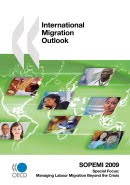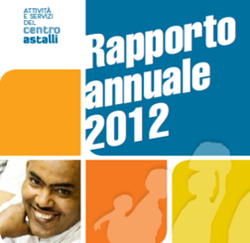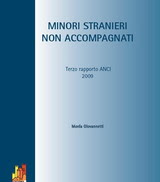Looking for an American dream
Looking for an American dream: "
When I began this project about immigrants, I found a totally different world, where every immigrant had a unique story but in the end had a common objective: reach the American dream, which for many turned into the American nightmare.
Coming from so much misery, where the governments of their native countries have completely forgotten about them and where opportunities don’t exist, they have little choice but to risk taking the train in search of a better life. But for many the only thing they find is bad luck.

The day finally arrived for me to get on the train. It’s a story that requires a lot of time, patience and persistence because you never know when or how many immigrants will get on.
The people who help immigrants always told me: “be careful, it’s not easy, why don’t you dress like a man? There are a lot of rapes and robberies.” It’s gotten to the point where female immigrants travel with condoms and are prepared for something like rape to happen.
But, that day I was with a freelance photographer and a person from the Mexico Migrant Network who knew the route of the train very well. We were covering a caravan of Honduran mothers who were visiting migrant shelters along the rail lines from Tapachula, Mexico to the capital Mexico City, looking for their disappeared children, who went missing on their search for the American dream. One of the mothers, Emeterea Martinez, fights every day for her daughter to return home, even if 20 years passes, she still keeps faith that she will return…

The train stopped, which is unusual in La Pastora, Veracruz, where members of a group called “The Good Samaritans of La Patrona” waited for the train in order to give out bags of food to traveling migrants.
That day the train stopped for an hour, and that’s when I decided to get on, I began taking pictures, some immigrants were timid, they didn’t want to talk, probably due to fear. But little by little I earned their trust and the train started moving again.
Everything was an adventure. The speed was slow. Usually it’s very fast. One of them said “The train mechanic must know that you’re here, because it’s going really slow.” This made me feel a little calmer. We kept going. One of them had been kidnapped and robbed and he told me his story. He asked me to lend him my cell phone to call his wife to tell her he’s okay. He showed me his passport and his happiness because the “The Good Samaritans of La Patrona” had given him new white shoes. Jose Humberto Castro didn’t stop dancing.

Everyone came to me to tell me their story when someone yelled all of a sudden “There are robbers, they want to get on” and then began the rain of rocks. I could only tell I was surrounded by 10 migrants who were protecting me. I wasn’t scared, I just kept my head down and let them control the situation.
When it was over, they just said “F*ing robbers.” We continued until the final stop at Orizaba, Veracruz. The train slowed down to a speed that I was able to easily hop off with the help of the migrants.
Everyone got off the train happy… one part of the trip was done. We left and ran for 15 minutes to avoid possible kidnappers until we got to the next stop. That’s where I said goodbye to them, wishing them the best of luck. I always asked them “You aren’t afraid of dying?” and I always got the same answer: “No, because God is with us.” The trip for me lasted two hours (35 km). For them, it lasts two months (3000 km) from Tapachula to the U.S. border.

Two days passed and I returned to another migrant shelter where the Honduran mothers were visiting when suddenly a party erupted. Emeterea Martinez reunited with her daughter Ada Ortiz after 21 years of separation. That’s when one realizes it’s worth fighting for a cause. At first they were crying, then the smiles came.

Even though Mexico is going through a wave of violence, where life has no price, there are good people like the immigrants searching for a better life for themselves and their loved ones. Or the mothers. Or the “Good Samaritans. Not everything is negative. There’s also hope. Like the story of Emeretea looking for her daughter who disappeared 21 years earlier while seeking the American dream but who ended up settling in Mexico and making a decent life for herself."



















Nessun commento:
Posta un commento